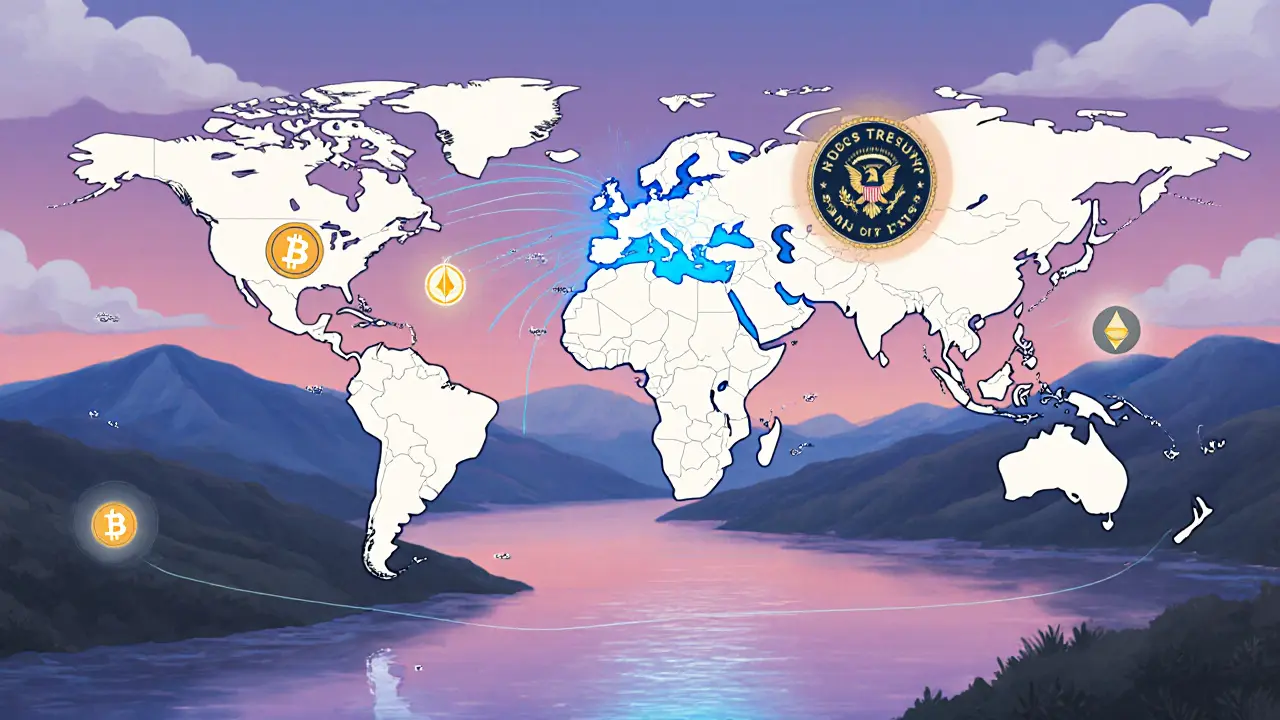North Korean Crypto: How the Regime Uses Digital Money
When exploring North Korean crypto, the practice of the DPRK to generate, move, and hide cryptocurrency assets for state purposes. Also known as DPRK digital finance, it blends tightly‑controlled mining farms with covert exchange channels. This blend lets the regime earn foreign currency while staying under the radar of international watchdogs. North Korean crypto has become a shortcut for funding cyber‑attacks, buying luxury goods, and supporting sanctioned allies. The model is simple: create coins, hide their trail, and cash them out wherever the world turns a blind eye.
Key Themes in North Korean Crypto Activity
One of the biggest drivers is the web of sanctions, economic restrictions imposed by the United Nations, United States, and EU that block traditional financial flows to the DPRK. Because banks refuse to process DPRK transactions, the regime turns to crypto as a loophole. Crypto mining, large‑scale computational work that creates new coins and rewards operators with digital assets supplies the raw coins that later get swapped on illicit platforms. The relationship can be summed up as: sanctions push the regime toward mining, mining fuels the crypto supply chain, and the supply chain fuels sanctions evasion. This chain shows the triple: sanctions influence North Korean crypto, North Korean crypto requires crypto mining, and crypto mining enables sanctions evasion.
Another crucial piece is the network of darknet exchanges, online marketplaces that operate outside legal oversight, allowing anonymous buying and selling of crypto. These platforms let North Korean actors convert mined coins into cash or other crypto without triggering AML checks. The flow works like this: the state runs mining farms, moves the coins to exchange accounts, then uses mixers or peer‑to‑peer trades to hide the origin. This chain illustrates the semantic triple: “North Korean crypto requires darknet exchanges,” and “darknet exchanges influence the success of evasion strategies.” The exchanges also provide a bridge to other illicit services, such as ransomware‑payment hubs and weapons procurement channels.
Technology also plays a decisive role. The DPRK invests in custom ASIC hardware, often built in secret factories, to keep mining costs low and output high. The mined coins are typically privacy‑focused assets such as Monero, which obscure transaction trails with ring signatures and stealth addresses. At the same time, state‑run cyber units hack foreign wallets, steal coins, and funnel the loot into the same darknet venues. This dual approach—own mining plus illicit acquisition—creates a resilient crypto ecosystem that can adapt when one entry point gets blocked. When a foreign exchange cracks down, the regime simply shifts to another platform or changes the coin type, keeping the money flowing.
Understanding this ecosystem helps you spot red flags in everyday crypto use. Look for sudden spikes in privacy‑coin movements from unknown wallets, links to known sanction‑evading entities, or patterns that match typical DPRK mining output (large, steady block rewards, repeated IP ranges from known proxy services). Analysts also monitor blockchain analytics tools that flag clusters of addresses associated with known North Korean node IPs. By recognizing these clues, traders, compliance officers, and casual users can avoid becoming unwitting participants in a sanction‑busting network.
The articles below dive deeper into related topics you’ll encounter in this collection: from how fast Bitcoin confirmations work, to the mechanics of airdrop scams, to tax rules in Pakistan and beyond. Each piece adds a layer to the larger picture of crypto myths, security pitfalls, and practical strategies you need to navigate the space safely. Browse the list to sharpen your knowledge, spot risks early, and stay ahead of the ever‑changing crypto landscape.
How OFAC Sanctions Are Targeting North Korean Crypto Networks in 2025
A 2025 overview of OFAC's crackdown on North Korean crypto networks, detailing sanctions, methods, key players, and how firms can protect themselves.
